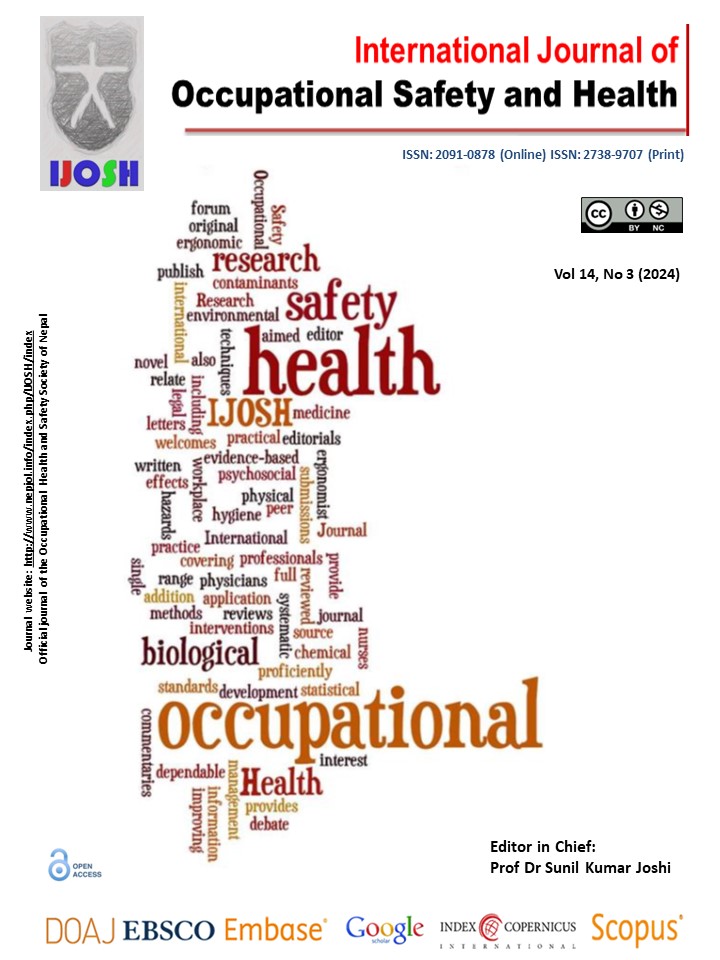Ergonomic Design of Noseless Bicycle Saddle using UPVC/Silica-Aerogel
DOI:
https://doi.org/10.3126/ijosh.v14i3.53597Keywords:
Noseless seat, Perineal pressure, Unsupported sittingAbstract
Introduction: During cycling most of the people suffer from perineal pain due to the pressure acting on the perineal area by the nose of the seat. Also Unsupported sitting on the saddle in a forward bending posture for longer time induce low back pain (LBP) among cyclists. So this paper presents the design of noseless bicycle seat with backrest using UPVC/Silica-Aerogel.
Methods: This seat is designed as per the anthropometric dimensions of human body. Various parameters such as Lumbar position, seat tilt angle, seat position, backrest angle, seat height, backrest height, seat and backrest width are considered and the optimal value is determined while designing. The material chosen for the base of seat is UPVC/Silica- Aerogel composite and the cushioning material is chosen as polyurethene foam. The design is executed in 3D modelling software and validated using FEA package.
Results: The maximum stresses induced in the newly proposed material UPVC/Silica-Aerogel (4.41MPa) is lesser than its yield strength (59 MPa). The maximum anterior stress of noseless seat is found out to be 24.5 kPa which is lower than that of the saddle with nose (41 kPa).
Conclusion: As the anterior stress of noseless seat is lesser, the perineal pressure of cyclists is greatly reduced and this decreases the health problems associated with the perineal pressure. Also the backrest of the seatpan enhances the supporting of back muscles and reduces LBP among cyclists.
Downloads
Downloads
Published
How to Cite
Issue
Section
License
Copyright (c) 2024 The Author(s)

This work is licensed under a Creative Commons Attribution-NonCommercial 4.0 International License.
This license enables reusers to distribute, remix, adapt, and build upon the material in any medium or format for noncommercial purposes only, and only so long as attribution is given to the creator.





